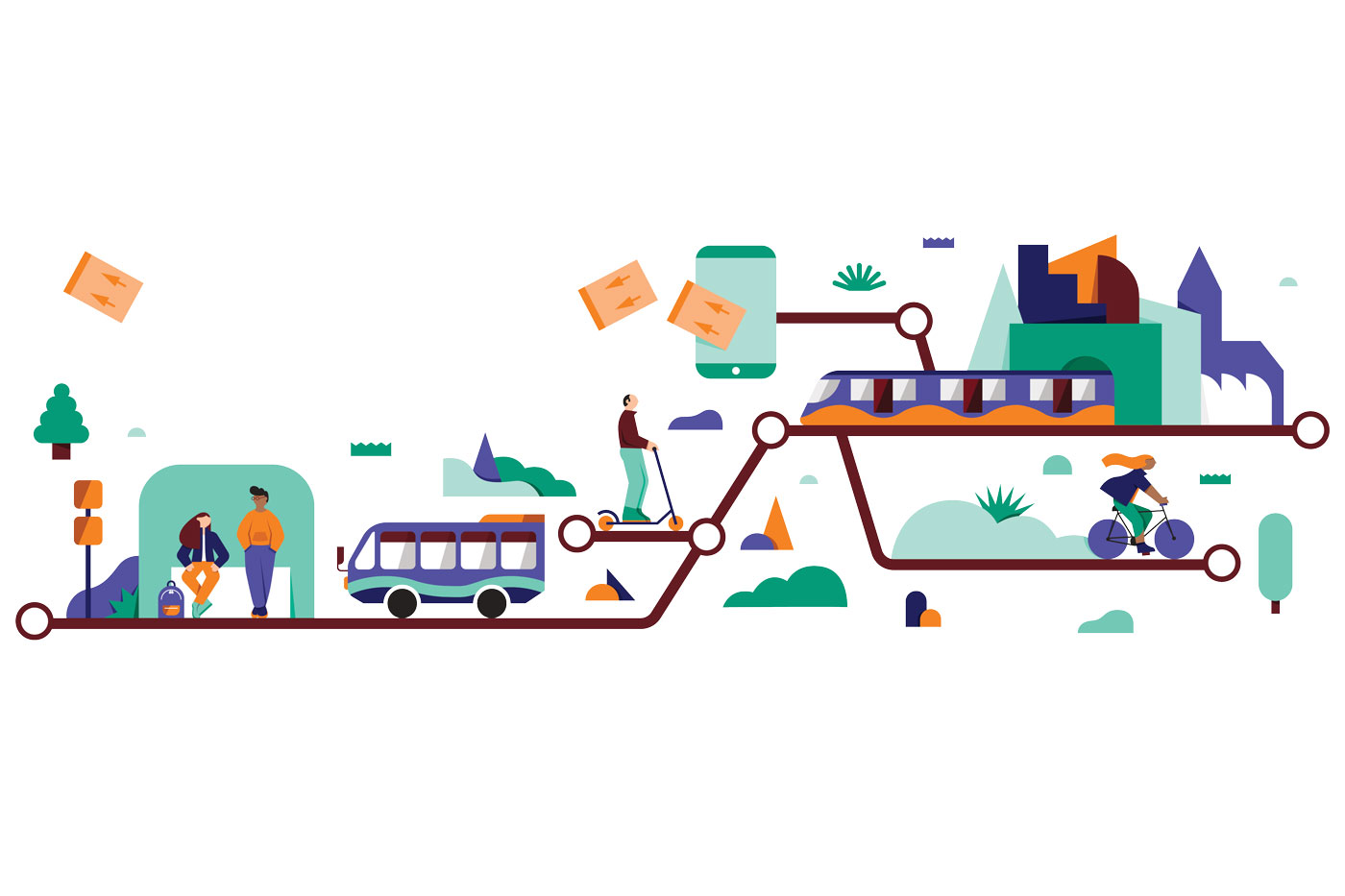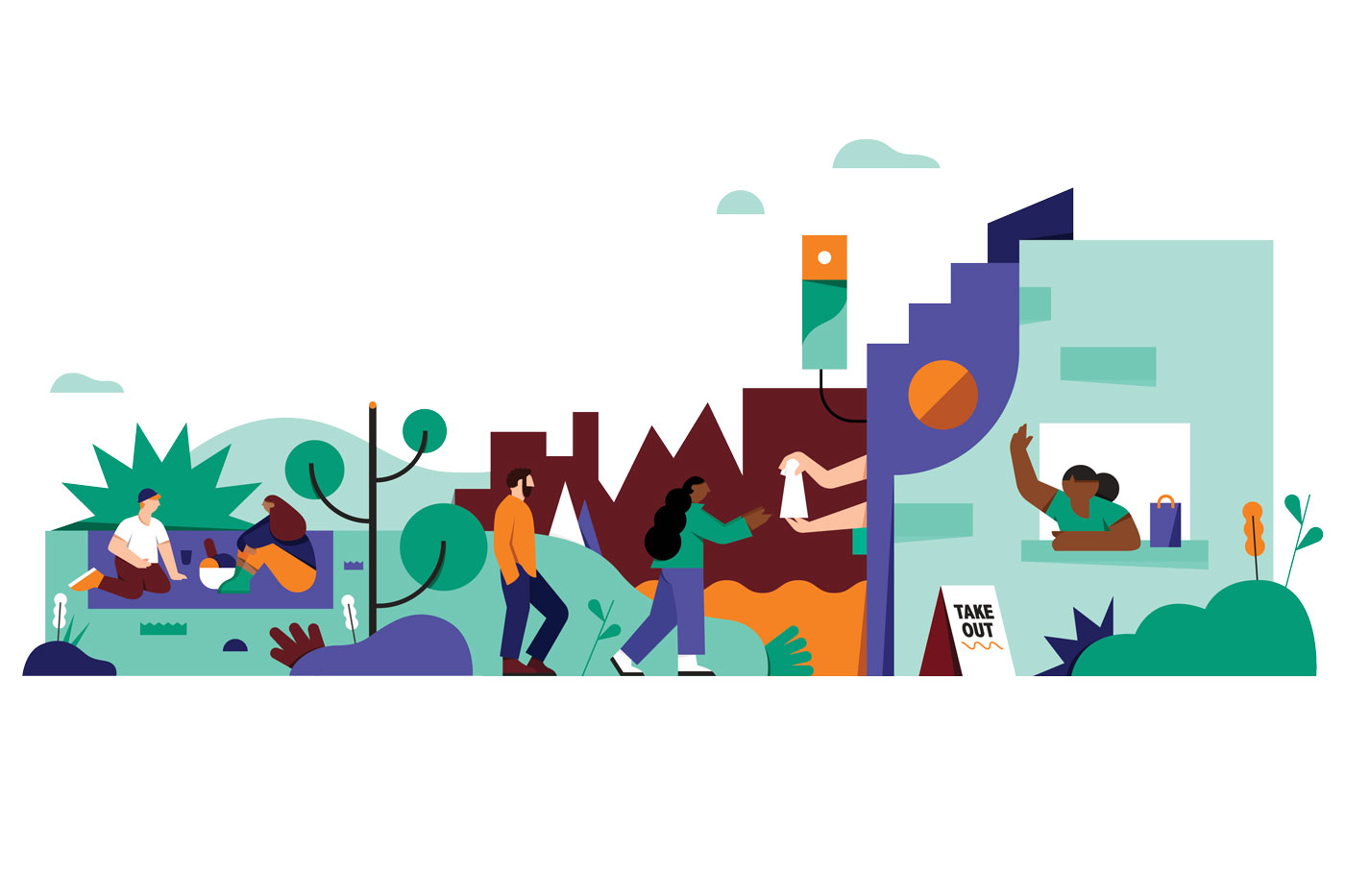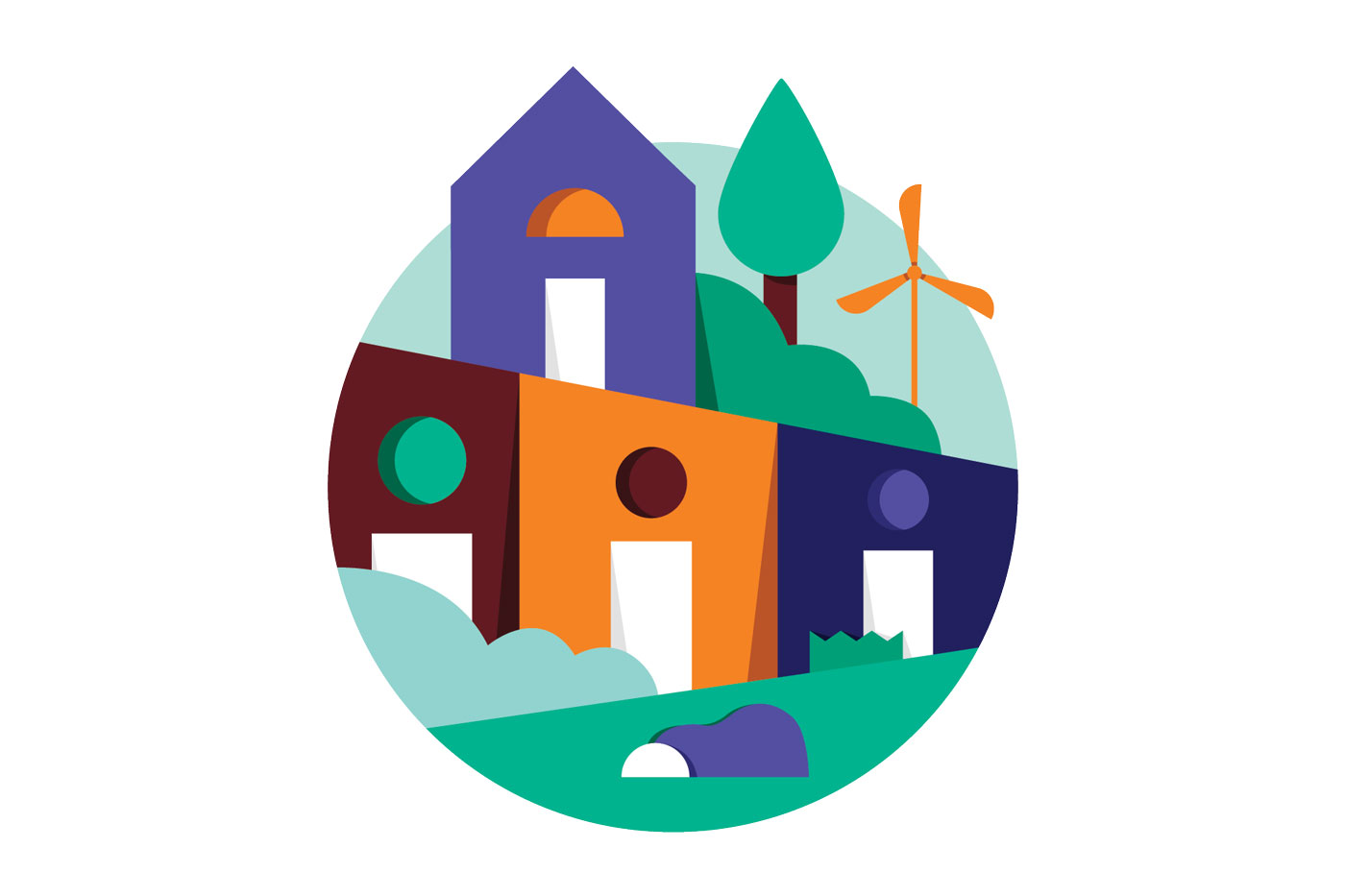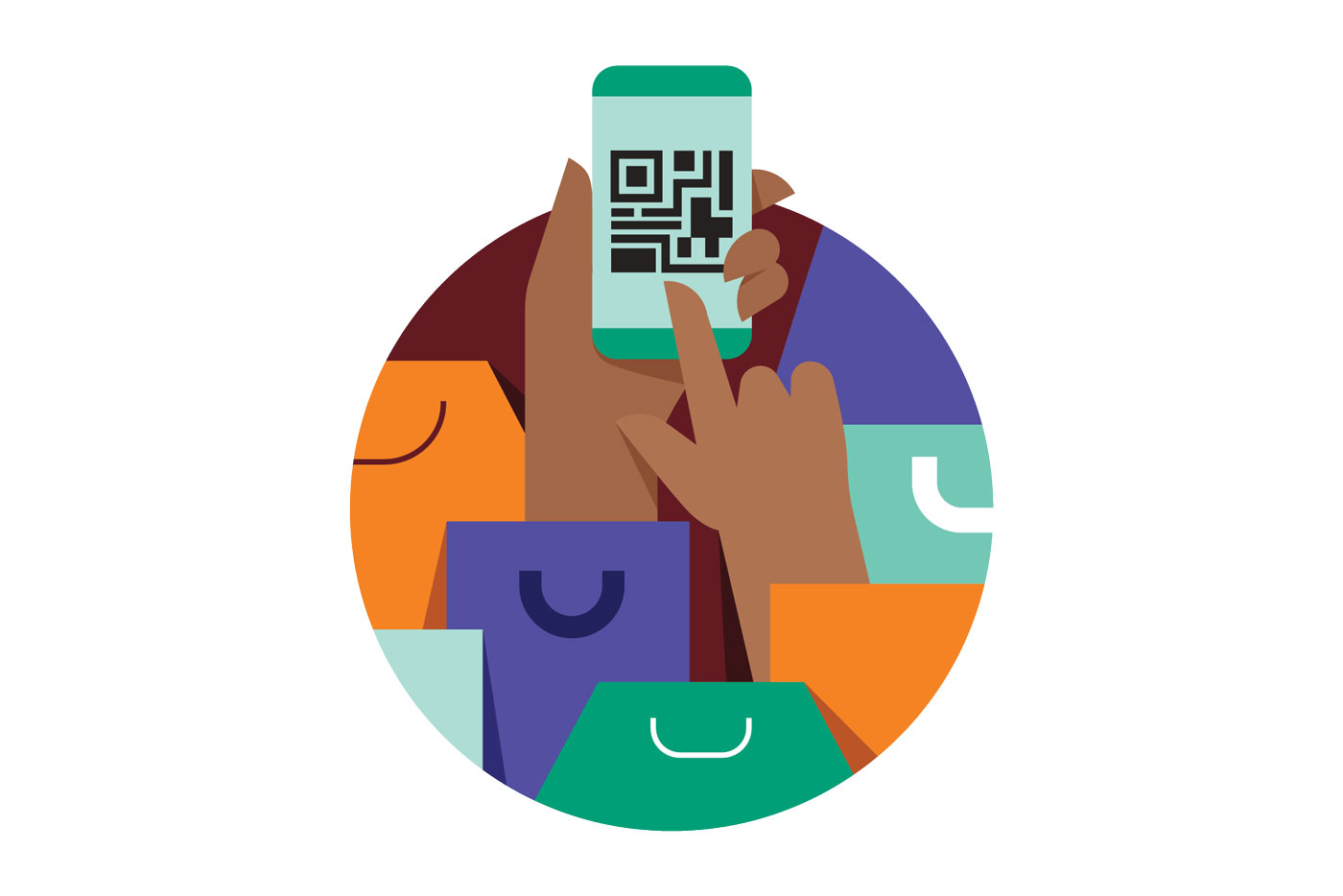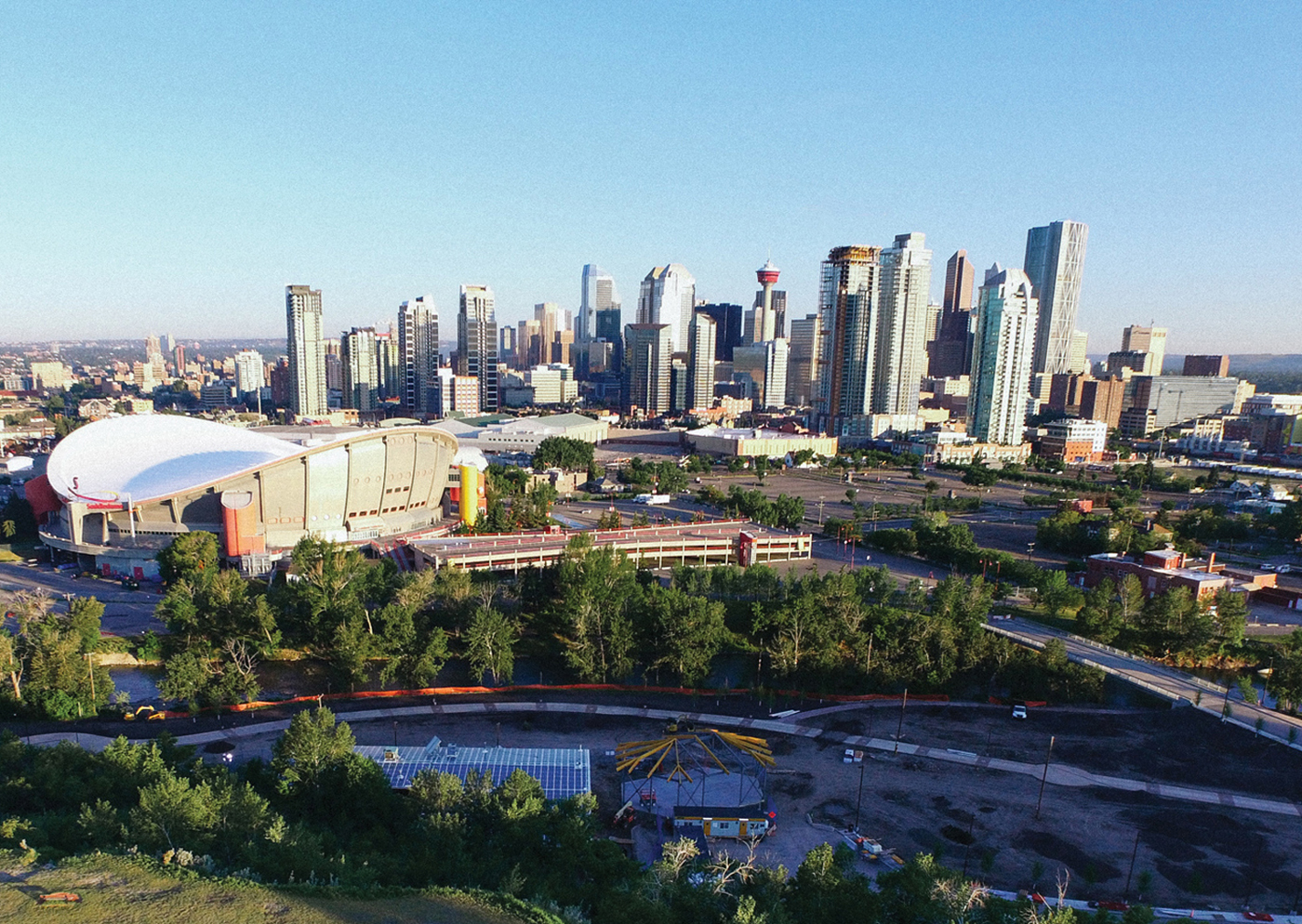The Future of Post-Pandemic Calgary
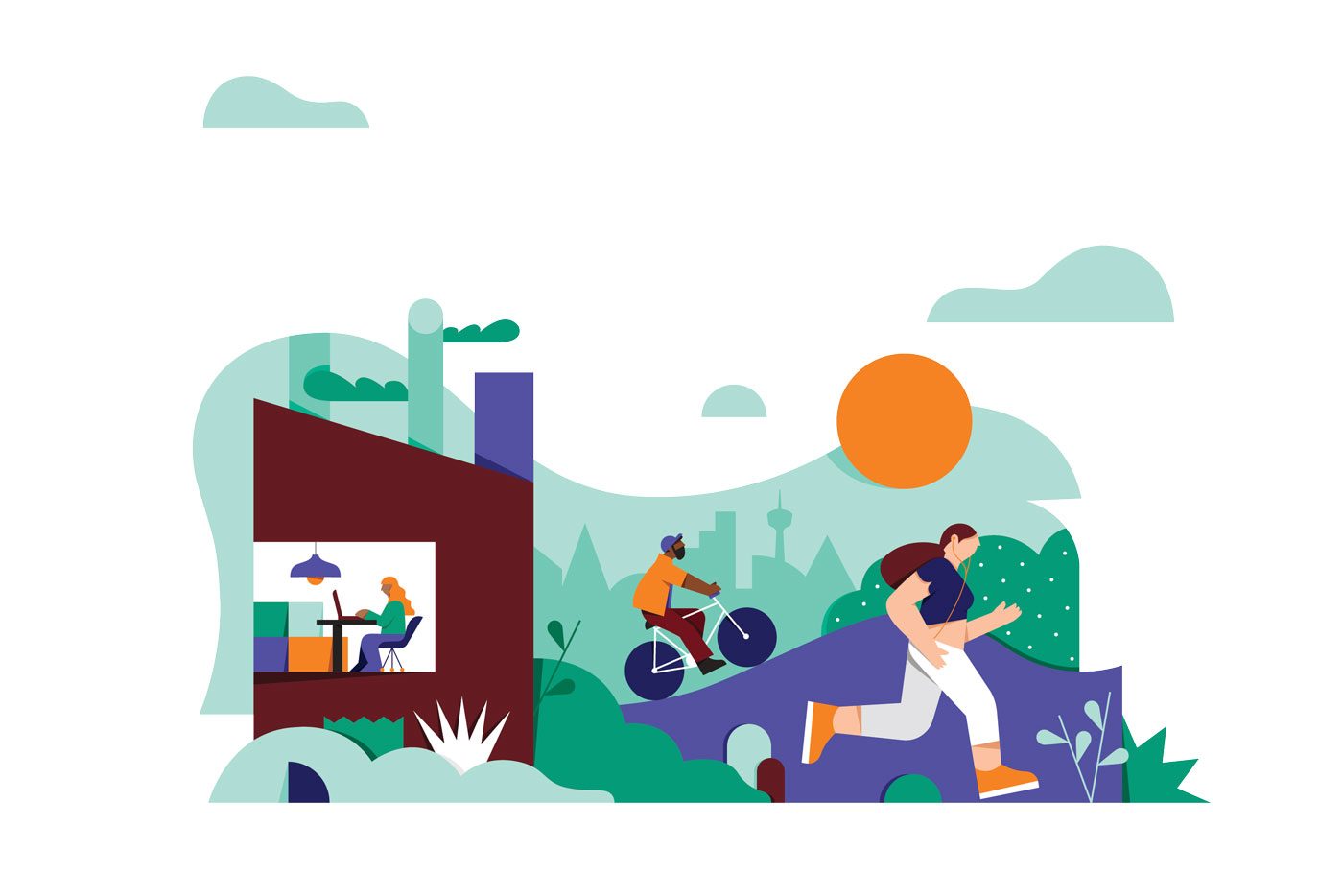
Illustration by Mateusz Napieralski
Between social-distancing orders, business closures, gathering restrictions and more, the pandemic has reshaped nearly every aspect of life in Calgary. Usually changes (good and bad) to a city take years, even decades, or longer, to be seen and felt. But the pandemic had immediate effects on city life. Residential neighbourhoods were suddenly full of workers on video conference calls from their home offices and children remote-learning from kitchen tables, while office towers and the businesses that serve them everything from coffee to parking sat empty. The City transitioned roadways now unused by commuter traffic to extra space for walking and biking. Restaurants became takeout pickup hubs and shops focused on their e-commerce offerings. In many cases, the pandemic accelerated existing transitions, such as the move to e-commerce or the desire for multi-generational housing. In others, it highlighted problems we hadn’t really identified and demanded that we start to think about our spaces in a new way to ensure safety and equity as we move forward. Alongside Calgarians themselves, Calgary as a city proved resilient by transitioning quickly to make short-term changes, but some of these changes will also be long-lasting — the question is which ones. We take a look at predictions for where we go from here and how we build the city for the new future.

